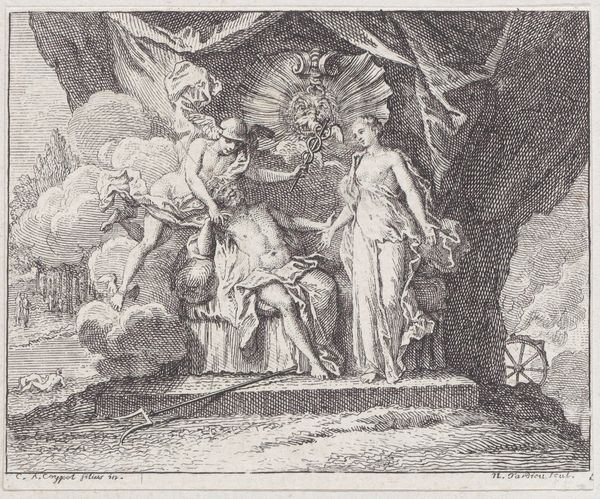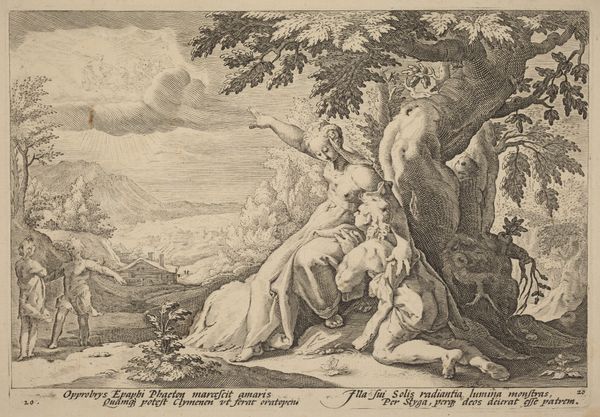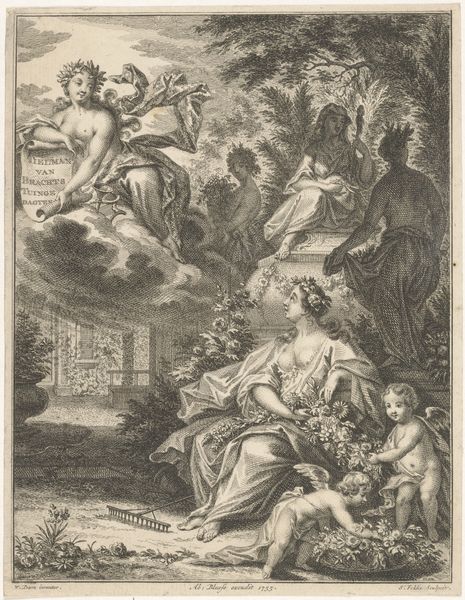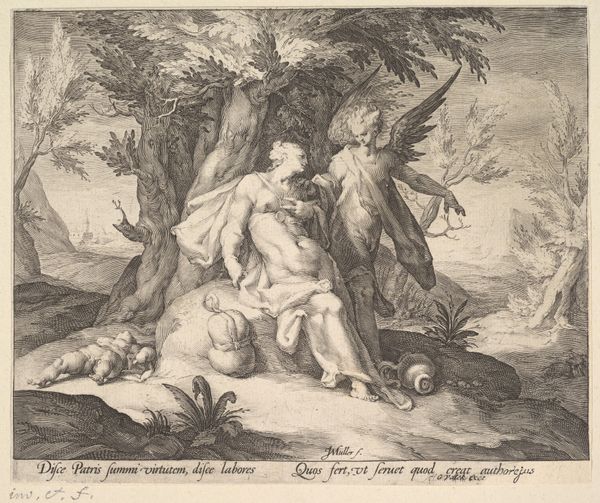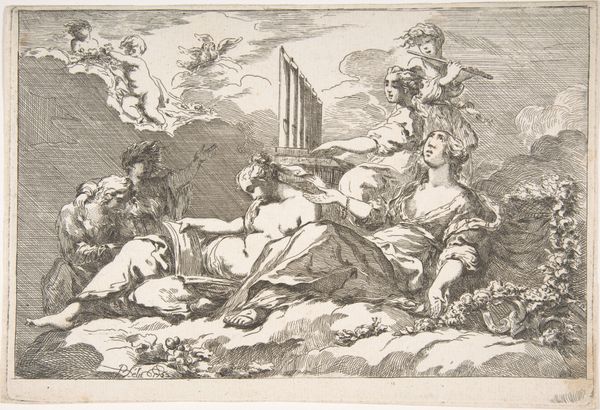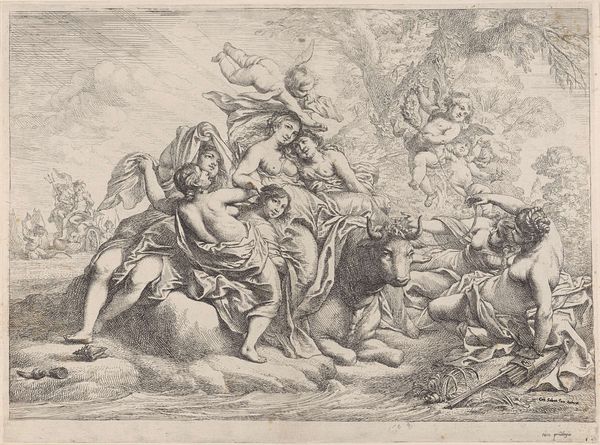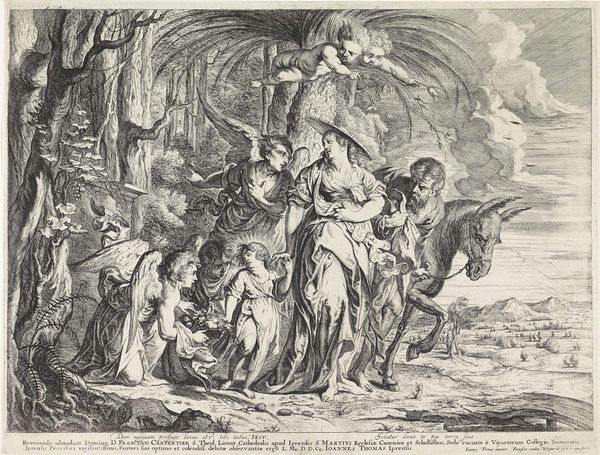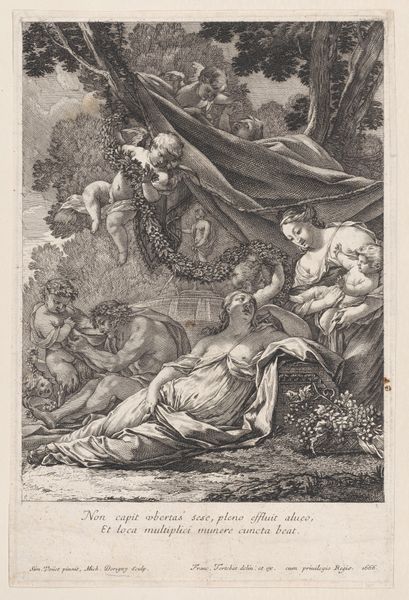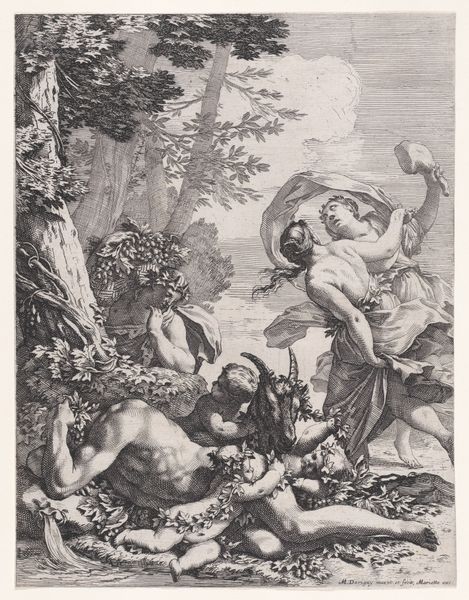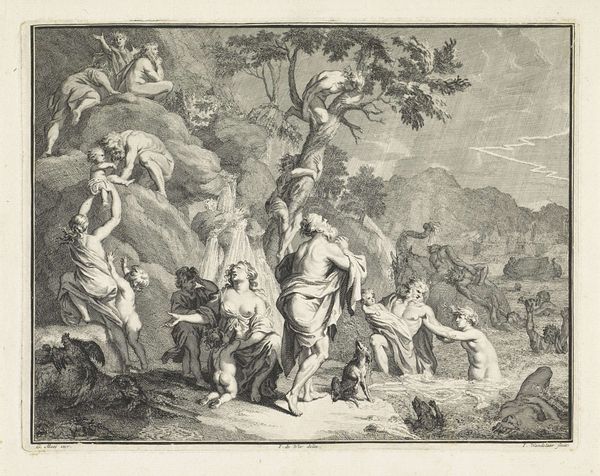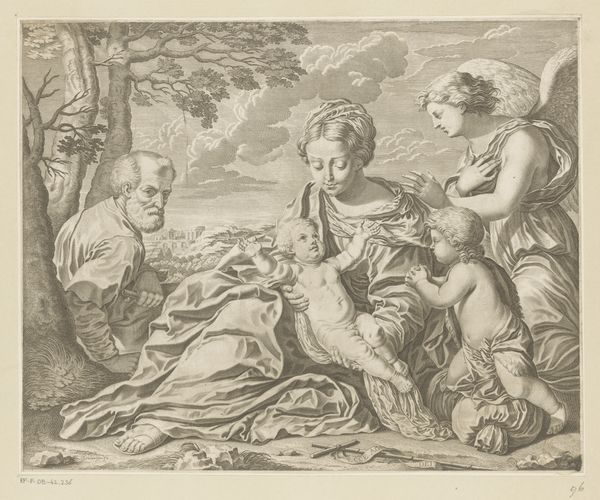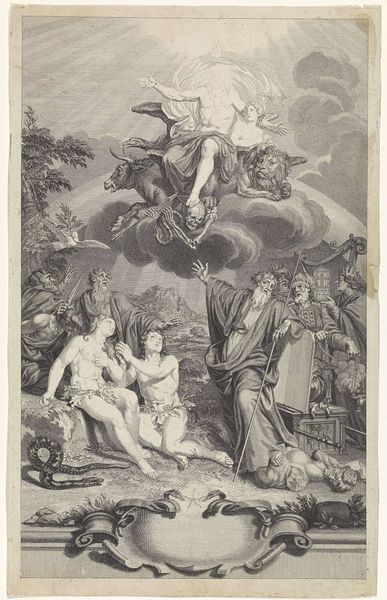
drawing, print
#
drawing
#
allegory
#
baroque
# print
#
landscape
#
history-painting
Dimensions: Sheet (Trimmed): 3 1/8 × 3 13/16 in. (8 × 9.7 cm)
Copyright: Public Domain
Editor: This is Nicolas Henry Tardieu's "Book 4, Fable 16: The Peace," a print from 1719. It feels so staged and serene at the same time. I'm curious about the figures and landscape; it seems full of allegory, what do you see in this piece? Curator: Ah, a visual echo resonating through time! Consider Mercury, poised in flight, and the symbolic weight he carries as a messenger and a herald of...what? Is it commerce, or is it more profoundly, peace? Look closely at the reclining figure below him. Editor: I see... She seems to embody tranquility, but who is she? Curator: She represents peace itself, perhaps even an idealized vision of repose after conflict. Consider her placement within the landscape, cradled by the natural world. Does that not speak to the universal desire for harmony? Notice the old man sitting to the side. What symbols accompany him? Editor: A book! Perhaps philosophy? It gives him a more academic tone, right? So the print connects ideas of peace to thought? Curator: Precisely. It posits peace not just as the absence of war, but a space for contemplation and intellectual pursuit, guarded, if you will, by eloquence, by Mercury. How interesting is this? But who are these fables meant to address? Is it merely a decoration for wealthy patrons or something deeper? Editor: This feels like a lesson masked as an image. A cultural message aimed at reinforcing particular values within society. Curator: Precisely. Each element—landscape, figures, symbols—contributes to a grander narrative, whispering tales of human aspiration across centuries.
Comments
No comments
Be the first to comment and join the conversation on the ultimate creative platform.
